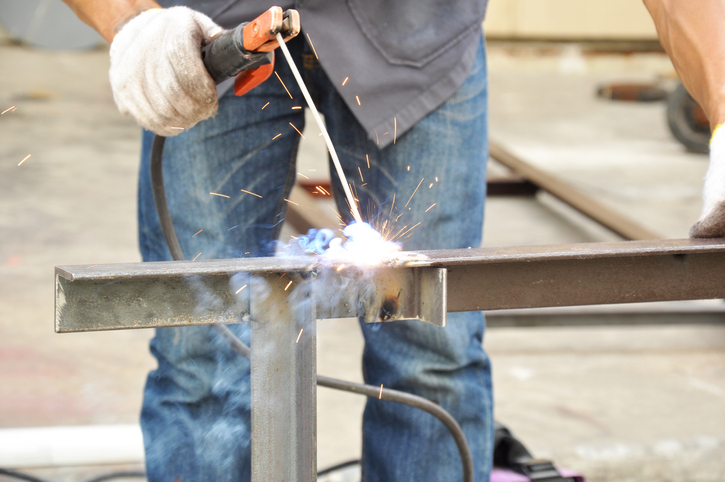4 Types of Welding to Learn Before Your Career in Auto Body Repair
Welding is an extremely useful skill and can turn into a rewarding and lucrative career in the auto body repair industry. If you refine your skills and perfect your techniques, then you can become a great asset to any automotive refinishing business. At Automotive Training Centres, students in our Auto Body Repair Technician training program cover a number of topics, skills, and processes that are essential to success on the job.
If you’re considering an Auto Body Repair program, you’ll want to take a look at these 4 welding techniques. Once you become qualified for a position at an auto body shop, having this extensive knowledge in varying levels of auto repair will help you adapt on the job. Continue reading to learn more about the basics of welding and what each type is used for.
1. MIG – Gas Metal Arc Welding (GMAW) for Auto Body Training
MIG welding is great for beginners, especially anyone newly entering auto body training. This technique is widely used in the automotive industry, and is considered the most common form of welding. It can also be used for various stages in the construction of homes and buildings.
MIG welding incorporates a continuous wire called an electrode, in combination with a shielding gas that heats up the two metals to be joined together. For auto body repairs of any kind, it’s important to note that this welding method requires constant voltage and a direct-current power source.

2. TIG – Gas Tungsten Arc Welding (GTAW)
Another welding technique that is helpful to understand for a career in auto body repair is TIG welding. If you pursue welding repair, you may use this technique when it comes to welding thick sections of stainless steel or non-ferrous metals together.
TIG welding is similar to MIG welding in that it uses an electric arc. However, in TIG welding, this electrode is made of tungsten, which is known to be one of the toughest metals, so it won’t dissolve or burn off. The market for TIG welding is most often the automotive and aerospace industries, working with larger pieces of metal and equipment.
3. Stick – Shielded Metal Arc Welding (SMAW)
A unique characteristic of stick welding is that it’s portable. This makes it highly effective and useful for welding jobs such as construction, auto maintenance and repair, underwater welding, industrial welding, and more. However, it may not be as precise as MIG or TIG welding, and should be considered if the aesthetics of the weld job are considered important.
The process of stick welding requires the use of an electrode that is referred to as the ‘stick,’ which uses an electric current to form an arc between itself and the metals to be softened and combined. It takes a certain level of welding experience to be comfortable with stick welding and to have your work pass a destructive bend test.

4. Flux-Cored – Flux-Cored Arc Welding (FCAW)
An alternative method to stick welding is flux-cored, which is also portable and offers high welding speed. With a number of variables to manipulate, such as welding angle, voltage levels, chosen polarity, and more, this method can be used for a variety of welding tasks. Generally, however, it does create a lot of smoke and fumes, so it is best completed in outdoor settings with proper ventilation.
Those just starting out in the auto repair industry can get their feet wet with the most basic forms of welding, and progress to more advanced techniques as they become comfortable with the processes. For any aspiring auto body technician, welding can be a valuable skill to master.
Interested in becoming an auto body technician?
Contact ATC Surrey for more information!


